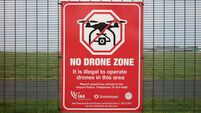Disease’s infection rate highest in Ireland
Cryptosporidiosis, an infection caused by a parasite that infects cattle and other domestic animals, infected 10 people per 100,000 in Ireland in 2009, compared to an overall confirmed case rate across 30 countries of 2.74 per 100,000.
The parasite which causes the disease — cryptosporidium parvum — has elements that survive well in the environment and human infection arises from “a range of environmental contacts, including contaminated water and care centres for young children”, according to the Annual Epidemiological Report 2011 of Eurosurveillance, an online scientific journal that monitors the surveillance and control of communicable diseases.













